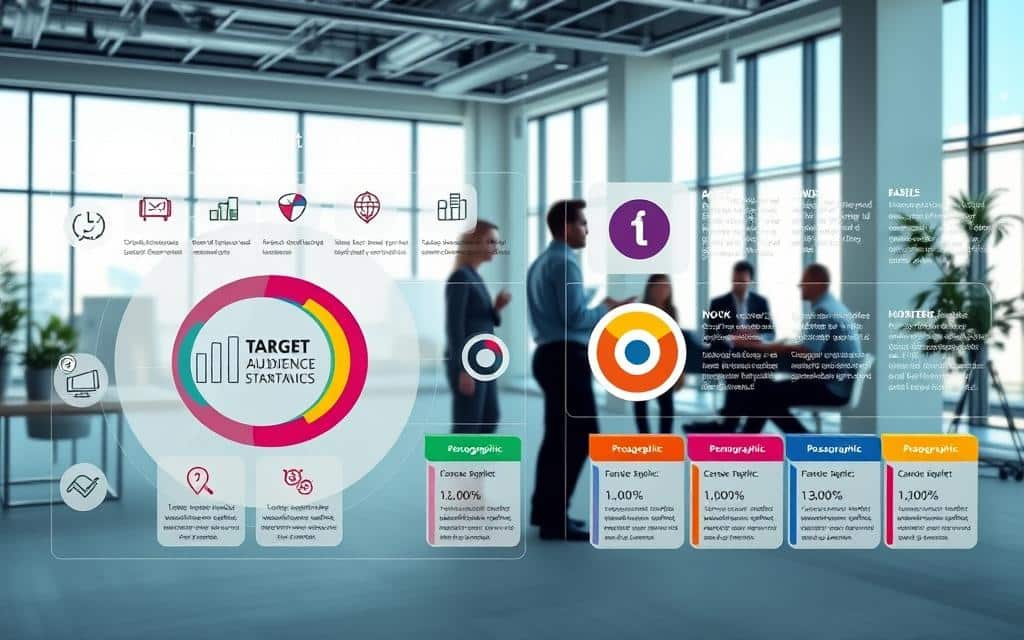You’re staring at seven browser tabs, three spreadsheets, and notifications pinging nonstop from different platforms. Sound familiar? Coordinating promotions across social media, email, and paid search often feels like herding cats – especially when you’re trying to grow a business. I’ve been there, watching entrepreneurs drown in endless tasks while their campaigns underperform.
Here’s what most miss: successful coordination isn’t about working harder. It’s about working smarter with the right framework. Over the next few minutes, I’ll share battle-tested strategies that helped me transform chaotic workflows into streamlined systems – the same ones I now use daily to keep campaigns humming smoothly.
Key Takeaways
- Centralized tracking beats spreadsheet chaos
- Automation handles repetitive tasks silently
- Clear metrics prevent wasted ad spend
- Batch scheduling saves hours weekly
- Template systems maintain brand consistency
- Regular audits spot underperformers quickly
Navigating the Landscape of Modern Ad Campaigns
Ever feel like you’re juggling flaming torches in a circus? That’s modern advertising. Platforms multiply faster than rabbits – Facebook feeds morph daily, TikTok trends vanish by lunch, and email inboxes overflow. The chaos isn’t imaginary. Your customers aren’t everywhere at once, and neither should your campaigns be.
Understanding the Market Dynamics
Not all campaigns serve the same purpose. Awareness-building efforts need bold visuals and storytelling, while conversion-focused ads demand clear calls-to-action. I’ve seen product launches flop because teams used “one-size-fits-all” creatives across platforms. Match your campaign type to your business goal – it’s like wearing snow boots to the beach versus flip-flops.
The Role of Digital Channels
Platforms aren’t interchangeable. LinkedIn users scroll during work hours, Instagram shoppers browse evenings, and TikTok viewers crave quick entertainment. Effective strategies require adapting your message to each space’s culture. Collaboration between managers, designers, and data analysts turns fragmented efforts into unified stories.
Change is constant, but core principles remain. Audit performance weekly. Tweak underperforming ads fast. Double down on what works. The landscape shifts, but your compass stays fixed on strategy, execution, and optimization.
Clarifying Your Goals and Target Audience
Ever poured money into ads only to hear crickets? I’ve watched companies blow entire budgets because they skipped this critical first step. Clarity beats creativity every time when launching campaigns. Let’s break down what actually moves the needle.

Defining Campaign Objectives
Your business isn’t running campaigns just to stay busy. Last month, a client nearly doubled conversions by linking their email campaign goals directly to quarterly sales targets. Ask: “Does this promo support our main marketing priorities for Q3?”
Review last year’s data before setting new targets. If your best-performing campaign drove 500 leads, aiming for 1,000 without strategy changes sets you up for disappointment. Stakeholder input matters too – sales teams often spot opportunities marketing dashboards miss.
Identifying and Segmenting Your Audience
“Everyone with a pulse” isn’t a target audience. I worked with a skincare brand that increased sales by 40% after focusing solely on women battling hormonal acne. Specific problems create hungry customers.
Build personas using:
- Support ticket complaints
- Product review pain points
- Competitor audience overlaps
One fitness app client discovered their true audience wasn’t gym rats but busy parents. Different segment? Different messaging. Their “15-minute home workouts” campaign crushed their generic “get fit” ads.
Developing a Comprehensive Ad Campaign Strategy
Remember that road trip where you took three wrong exits before finding the highway? That’s what running promotions without a plan feels like. A solid strategy acts like GPS for your marketing efforts – it keeps you focused while allowing detours when opportunities arise.
Outlining Your Campaign Roadmap
Start by asking: “Where are we going, and what tools get us there fastest?” Your roadmap needs three clear markers:
- Platforms matching your audience’s daily habits (TikTok for Gen Z, email for professionals)
- Content types aligned with buying stages (videos for discovery, comparison charts for decision-making)
- Timelines that create momentum (social teasers before product drops)
I helped a bakery chain boost pre-orders by 60% using this method. Their Instagram Reels drove awareness, while Google search ads captured “best birthday cakes near me” queries. Each channel played specific roles like actors in a play.
Integrating Various Marketing Channels
Integration isn’t about doing everything – it’s about making pieces fit. A skincare client saw 3x more website visits when their YouTube tutorials linked to blog posts, which then offered email-exclusive discounts. Their integrated campaign approach turned casual viewers into repeat buyers.
Prioritize platforms where your audience actually hangs out. One fitness app discovered their users ignored Twitter but devoured Spotify podcasts. They shifted resources accordingly, creating workout playlists that drove app downloads.
Your strategy should breathe. Review metrics weekly, but wait at least 14 days before axing underperformers. Sometimes campaigns need time to find their rhythm – like a new song growing on you.
Essential Tools and Technologies for Campaign Success
Ever found yourself lost in 12 browser tabs while your coffee goes cold? I’ve been there too. The right tech stack turns that chaos into calm – like swapping a rusty wrench for a power drill. Let’s cut through the noise.

Automation and Analytics Platforms
Tools should work while you sleep. Google Analytics tracks user behavior patterns most marketers miss. Seventh Sense boosts email open rates by learning when your audience actually checks their inbox. I’ve seen clients gain 3 extra hours weekly using Lately.ai to auto-repurpose top-performing blog content into social posts.
Leadsie became my secret weapon for client onboarding. No more endless email threads requesting ad account access – it handles permissions in three clicks. These platforms aren’t just convenient; they’re profit protectors.
Leveraging Reporting and Data Insights
Data’s useless if it doesn’t tell a story. I prioritize dashboards showing conversion paths, not vanity metrics. One e-commerce client discovered 68% of sales came from retargeted visitors – info buried in their old reports.
Your tools should answer questions before you ask them. Google Search Console alerts me to crawl errors killing organic traffic. Custom reports in campaign management software highlight which creatives drive actual sales versus just clicks.
Pro tip: Master three tools thoroughly instead of skimming ten. Depth beats breadth when interpreting metrics that move needles.
how to manage multiple ad campaigns effectively
Every morning feels like spinning plates – stop one from wobbling, and another starts to fall. Here’s the truth: organization beats hustle when handling numerous promotions. Let’s turn that chaos into rhythm.
Build your mission control center first. Platforms like DashThis or Klipfolio let you monitor Facebook, Google, and email metrics in one view. I set up alerts for sudden spending spikes – caught a $500/day error last month that would’ve drained budgets.
Block time like a surgeon. Mondays for budget tweaks, Wednesdays for creative refreshes, Fridays for deep analysis. Stick to these slots religiously. A client reduced overtime by 60% using this method – no more reactive fire drills.
Templates are your secret weapon. Create standardized checklists for launches:
- Ad copy variations (3 minimum)
- Landing page compatibility checks
- Conversion tracking tests
Focus your energy where it matters. The 80/20 rule applies here – 20% of your promotions likely drive 80% of results. Flag these high-impact projects with color codes in your calendar.
Make small, trackable changes weekly. Adjust one headline. Test two visuals. Shift 10% of budget. Document every tweak in a shared log. This prevents “Frankenstein campaigns” where too many edits muddy performance data.
Leave breathing room. I keep Friday afternoons open for unexpected wins (or fires). Last week, that buffer let me capitalize on a viral TikTok trend that boosted signups by 300%.
Optimizing Your Ad Campaign Budget and Performance
Ever feel like you’re pouring money into a leaky bucket? I’ve watched businesses hemorrhage cash on poorly optimized promotions. Smart budget control turns that trickle into a steady stream of results.
Budget Allocation and Cost Management
Your money should work harder than you do. Start by calculating your max cost per acquisition – the breaking point where you still profit. A bakery client doubled revenue using this method, shifting funds from underperforming display ads to high-converting search campaigns.
Never split budgets evenly. Feed your top performers first. Trim spending on lagging promotions ruthlessly. Tools like Google’s Target CPA bid strategy help, but check them weekly. Automation needs supervision.
Track conversion rates like your business depends on it – because it does. Spot trends fast. Move keywords between campaigns when results stall. Test landing pages like a scientist – small changes, clear metrics.
Dayparting transformed one client’s wasted spend. Their pizza chain stopped showing dinner specials at 3 AM. Simple? Yes. Effective? 23% higher click-through rates. Time your promotions like you’d time a joke – delivery matters.
